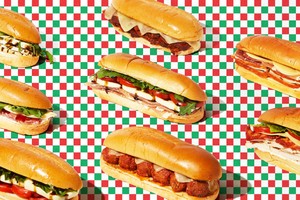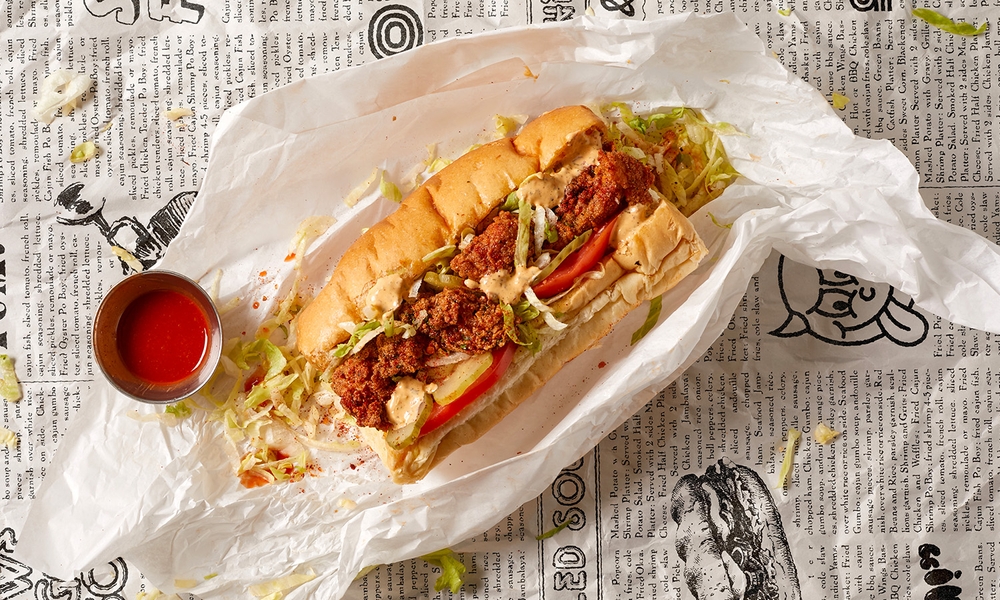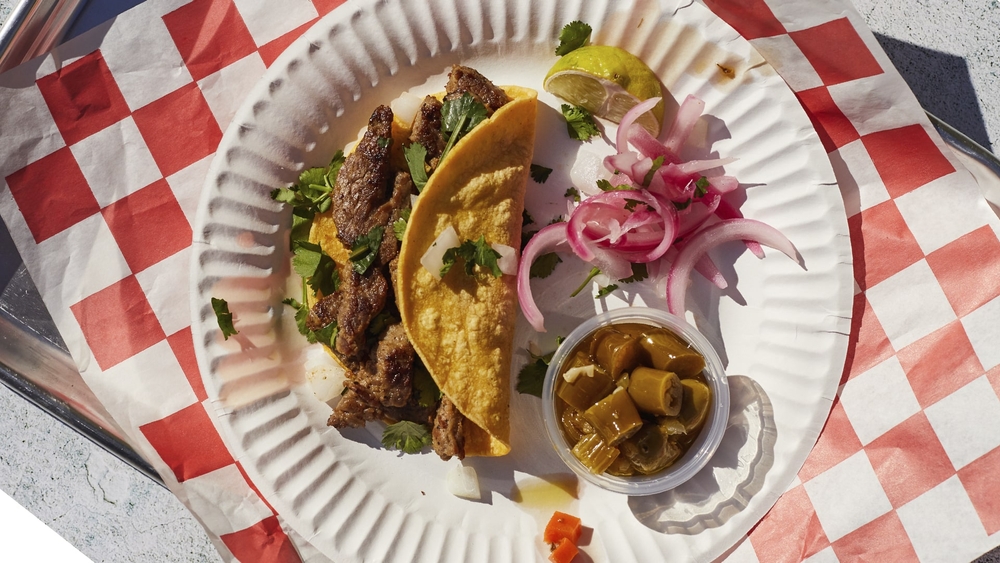You have questions… we have answers
If you work in the restaurant industry, you’ve likely heard a lot about a new concept called “ghost kitchens.” Even so, you might have more questions. In theis article, we’re teaching ghost kitchen 101 Let’s dive into how this future-forward model can be a beneficial addition to the restaurant industry for both operators nd eaters alike.
What is a ghost kitchen?
A ghost kitchen— also known as a dark kitchen, virtual kitchen, shadow kitchen or commissary kitchen— is a food preparation facility that prepares meals for delivery orders. You can think of a ghost kitchen as a restaurant without dine-in seating. Or as a commercial kitchen optimized for fulfilling delivery orders.
A ghost kitchen can be used to launch an entirely new restaurant or to increase an existing restaurant’s reach by creating new “virtual storefronts” in different areas.

For example, say you run a local Italian restaurant. In this scenario, you can likely only deliver within a 5-mile radius of your physical restaurant. If you were to start delivering food from a ghost kitchen in addition to your restaurant, you could reach an entirely new customer base. Further, many restaurants create ghost kitchens in high-order volume areas with a significant amount of delivery demand – resulting in increased reach, orders, and sales.
What’s the difference between ghost kitchens and virtual brands?
You’ve heard the word “virtual” in the context of ghost kitchens a few times in this article, but we must clarify that ghost kitchens aren’t the same thing as virtual brands. Virtual brands are digital storefronts on delivery platforms like Uber Eats, Doordash, Caviar, Grubhub, etc. The fact that they are entirely digital storefronts on delivery platforms is where the name comes from. Virtual brands are called “virtual” because the customer can only see and order from these storefronts online. Restaurants use the same kitchen to fulfill orders from a new, delivery-only brand actively managed and marketed by FutureFoods. Learn more about virtual brands here.
The rise of ghost kitchens
Ghost kitchens have proliferated during the pandemic. Many factors— including economic shifts, real estate surges, and labor shortages— have given rise to the delivery-only model.
Of course, we can’t talk about the rise of ghost kitchens without talking about delivery. In recent years, Smartphones have bred a convenience culture. we talk about However, the smartphone has exacerbated these discrepancies due to consumers’ newfound demand for convenience. In fact, delivery has grown 300% faster than dine-in since 2014.
The seismic shift toward delivery has also contributed to an already growing gig economy. Today, 40% of millennials are gig workers or freelancers, and 40% of companies worldwide hire gig workers. Ghost Kitchens are another opportunity for gig workers to find employment, and apps like Uber Eats hire workers for back-of-house operations.
Economic hardships are also a contributing factor to the rise of ghost kitchens.
Opening a brick-and-mortar restaurant in 2021 requires a lot of cash. According to a survey conducted by restaurantowner.com, opening a traditional restaurant costs anywhere from $175,500 to $750,000. As the price of commercial real estate increases, removing the need to rent out a large physical space with dine-in seating looks more and more appealing to restaurateurs. Ultimately, running a restaurant out of a ghost kitchen is a cost-efficient supplement and/or alternative to a restaurant’s dine-in business.
Overall, COVID-19 accelerated the already growing delivery industry (and subsequential gig-economy) and amplified economic hardships. Combining these cultural shifts and challenges opened the opportunity for innovation in many sectors, perhaps most notably the restaurant industry, and the trend of ghost kitchens caught steam. Fast.
What are the different types of ghost kitchens?
Now that we’ve covered ghost kitchens 101, let’s look at the different types of ghost kitchens.
- Incubator or pop-up kitchens: A space attached to a brick-and-mortar restaurant used solely to fulfill online and delivery orders. Incubator kitchens allow traditional restaurants to try new concepts, minimize chaos in the kitchen and create new revenue streams.
- Commissary or shared kitchens: Commercial spaces shared by multiple restaurants. They come equipped with all the appliances and cookware you need to fulfill online orders and don’t require a massive down payment or lifelong contract. Commissary kitchens are essentially kitchens available for rent to any restaurant or food entrepreneur.
- Kitchen pods: A kitchen pod is a small, transportable space typically located behind a restaurant (parking lot). While they are not always comfortable to work in, they do let you chef up food on the fly.
The benefits of running a ghost kitchen
1. Save money… lots of money
Ghost kitchens are more cost-effective than brick-and-mortar restaurants. You can start running a ghost kitchen with less investment and therefore less risk. With no front-of-house labor, you’re unburdened from staffing. You also cut down operational costs, save time, and reduce logistical headaches. Think about it, you don’t even have to figure out decorations and pay for furniture! With less investment and risk, ghost kitchens cut down operational costs and
not to mention You can get started quickly, with less investment (and risk). With no front-of-house labor, your team will be smaller, you won’t need as much space, and you can say goodbye to decorations and most furniture. Thanks to these minimized costs, restaurants can maximize their profits.
2. No need for premium locationsb
You’d be surprised at how many restaurants on the delivery apps are operated from ghost kitchens! The good thing about food is that it doesn’t matter which kitchen it’s made in—it only matters how it tastes. Ghost kitchens let restaurants have more freedom when choosing a location. While it is important to consider your delivery ratio (potential customers in the area), you don’t have to stress about paying the high store-front rents. You can even take advantage of under-used locations 5 mi within popular areas. Running a virtual brand out of a less popular space help you cut down your costs.
3. Adapt and evolve as you go
The beauty of only “existing” online is that you can easily evolve and rebrand your restaurant. You launched a burger band, and it’s not performing as expected? No worries, it can be a hot dog shop by tomorrow! While it’s still important to garner a loyal customer base, ghost kitchens’ increase speed to market is excellent for entrepreneurs/ restaurants willing to experiment. You can even run multiple virtual brands to optimize your business from the same ghost kitchen.
4. Simplified operations
“Running a restaurant is easy,” said… no one ever. Juggling in-house and delivery is a difficult dance for even the most skilled operator. The delivery-only model of ghost kitchens saves time. Plus, if you work with a delivery management solution like Otter, you can see all your orders (across apps) from one tablet. You can also update multiple menus on the fly, unlock advanced insights into order issues and promotions performance, and run automated marketing on delivery apps. Otter will help your restaurant stand out from the competition.
The challenges of running a ghost kitchen
1. Gaining visibility can be difficult without a physical footprint
Unless your restaurant is already well known, you’ll have to work hard on developing your brand. Forget about walk-in traffic: you’ll be forced to compete in a very crowded digital marketplace with no physical location. Our advice? Customer reviews are critical. If you still don’t have a strategy for reviews in place, this is the time to work on it to increase your restaurant’s credibility and boost your online positioning.
2. Maintaining and nurturing the customer relationship can be challenging
A brick-and-mortar restaurant is a place to offer experiences—but how do you provide a good experience at a distance? With almost 0 customer interaction, you have to get creative to build customer loyalty. Ghost kitchens make restaurant marketing mandatory. Luckily there are endless ways to reach new customers and retain old ones through social media.
The future of ghost kitchens
It’s clear that ghost kitchens offer many advantages, but are they here to stay? According to a new report by Rockville Research, the global food delivery market “is estimated to be valued at US$ 254 billion in the year 2028, growing at a CAGR of 10.9% in the period 2021 to 2028”. Since delivery is expected to keep growing faster than dine-in, ghost kitchens remain an excellent choice for restaurateurs to future-proof their businesses. As long as ghost kitchens present a lower-cost alternative to operating a traditional restaurant, there will be space in the market for them.



